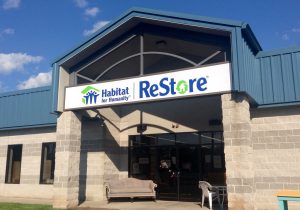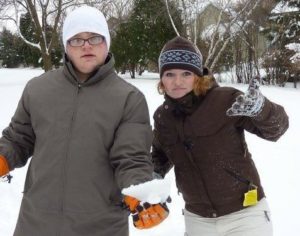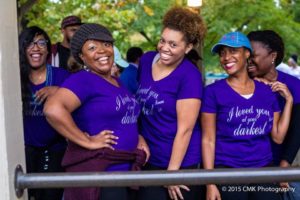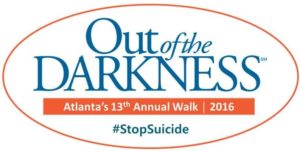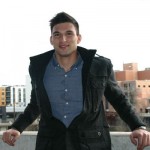Jane first showed symptoms with sloppy handwriting, but soon she could barely stand on her own feet as her calves felt like solid lead weights. Ms. Jane Smith* would soon be diagnosed with Parkinson’s Disease.
In the office, her vibrant personality served her colleagues with laughter and smiles. Yet, her work in the scholarship office was only the tip of the iceberg to the monumental impact she had on the Atlanta landscape—through her selfless endeavors over five decades, Ms. Smith had become one of the hardest working humanitarians for our city serving every indigent population possible. Inspired to aspire to such selfless standards, I helped put together an awareness day called Moving Day 5K Walk through the National Parkinson’s Foundation (NPF) in Atlanta alongside the Neuroscience Club (GTNeuro).
It would be a fundraising event that unified families, friends, and communities to emphasize “movement” and share a common goal –help beat Parkinson’s.
The Moving Day project was a valuable learning experience that affirmed my passion for people. This passion and fascination that I developed from working in the community with National Parkinson’s Disease and Ms. Smith turned into a desire to create change and commit to working for people. Taking ideas to the next level, thinking outside the box, and making simple ideas into tangible experiences, I found it motivating to ignite an idea to build something that can help others, putting others in front of myself.
The journey and adventure of this event was especially important to me because I realized that my passion, just like Ms. Smith, was serving people. The idea began as nothing more than a pow-wow between the GTNeuro executive team and public relations managers from NPF. We set lofty goals to raise $100,000 and to have at least 500 people come attend the event. No one in the room believed these goals would be possible–what we wanted to do was lay a small framework for a much larger event in the upcoming years.
Parkinson’s Disease wasn’t something that happened to just one person; it affected an entire community. The purpose of Moving Day would be to showcase that there is hope for the patients and the family members, and that people like Ms. Smith have our support and people rooting for them.
Teams from both GTNeuro as well as National Parkinson’s Foundation were set to execute small tasks. However, getting Moving Day off the ground from ideas on a whiteboard was a monumental hurdle–we still had to reach out to those afflicted with Parkinson’s, local businesses, and put together promotional material to gather a good crowd.
But, this was just the beginning.
We had to recruit volunteers from Georgia Tech, contact event suppliers, and coordinate everything we did with the Georgia Tech Police Department. Even with less than four weeks before the event, we were nowhere near our goal of 500 people attending the event, 100 volunteers, or raising $100,000. Incentivizing students and adults to come out on a cold and early Saturday morning was a simple fix. Jane Smith became the rallying cause of our entire event. Her impact on Georgia Tech and Atlanta over the decades drew hundreds to our event!
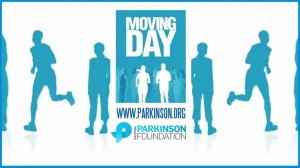 My experience partnering with National Parkinson’s Foundation and helping organize this event strengthened not just my ability to communicate, think critically, and solve problems as a leader, but more importantly appreciate leadership as an art. A piece of art has been planned with great detail and complexity; each picture telling a different story, each one unique and beautiful.
My experience partnering with National Parkinson’s Foundation and helping organize this event strengthened not just my ability to communicate, think critically, and solve problems as a leader, but more importantly appreciate leadership as an art. A piece of art has been planned with great detail and complexity; each picture telling a different story, each one unique and beautiful.
So what is the different between creating a breathtaking art piece and practicing leadership? I’ve learned that no two pictures can be the same; no two leadership experiences will be similar, no two conversations with people you work with will be alike. My leadership skills gained from this fundraising event was not defined by the numerous hours of planning or meticulous meetings we had, but it was defined through the different human experiences – each unique and beautiful just like a piece of art. I have learned that in order to be an impactful leader, I cannot just strive for success, I must strive for significance – just like each picture or photo has significance.
When November 9th had come, and though some of us were worried, everyone and everything was in place: volunteers showed up an hour before the event started to set up the booths. The walkers had started lining up at the start line and the 5K walk had started. On the side, we had booths where people were doing Zumba, tango and Pilates showcasing that there are different ways to help people with Parkinson’s Disease. All tents had motor skills tables demonstrating how Parkinson’s Disease affected people.
By the end, the day had been a success. Not only were we able to support Ms. Smith, we were also able to support the hundreds in the Atlanta community afflicted by this disease.
Our event went well with over 700 people attend, 200 volunteers, and raising over $140,000 before the end. We had made a significant impact in unifying a community as well as giving people hope. We did not just lay the framework for events that could be successful in the future, we paved the way for a revolution in the Parkinson’s community.
And in Ms. Jane Smith’s words, “we strove for significance and not success because success was finite, and significance had a ripple effect that never ended.”
*The real name has been removed to protect the identity of the person due to HIPAA.

